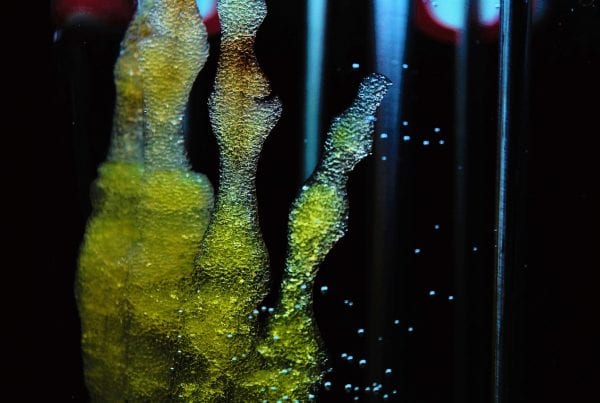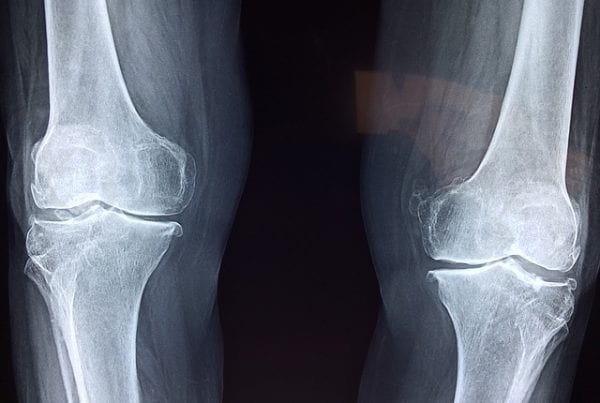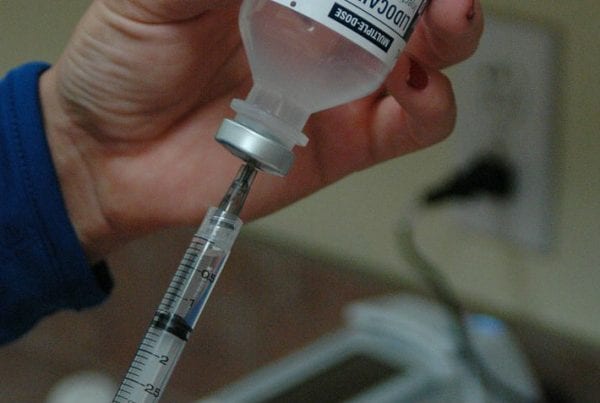Several clinical studies have investigated and established the feasibility, safety, and tolerance of stem cells of different origins for treating various conditions. Erectile dysfunction (ED) patients have been major beneficiaries of the efficacy of stem cell therapy.
Their regenerative ability, easy administration, and ease of availability have made stem cell therapy to be considered a potential procedure that can be utilized to reduce morbidity. This is because it can promote growth factors and stimulate the healing process for many conditions.
Organ transplant procedures have been popular and effective options for several of these conditions including heart problems, kidney problems, and erectile dysfunction. However, due to the shortage of donors, many patients are not able to wait long enough to receive a donated organ. This makes stem cell therapy a very desirable option. And since its discovery, different conditions have been treated successfully using the therapy, including erectile dysfunction.
Adipose stem cells, urine stem cells, bone marrow stem cells, and placental stem cells are some of the stem cells commonly used in treating erectile dysfunction. However, of all these, placental stem cells are considered to be better for several reasons.
What is Erectile Dysfunction?
Erectile dysfunction, which is sometimes referred to as impotence, is the inability to achieve or maintain an erection firm enough for sexual intercourse. It is a very common issue that affects millions of men, but it is also a very sensitive and emotional issue to discuss.
Not only does it affect reproductive health and sexual performance, but it also impacts people’s self-esteem and confidence, even leading to depression. It has negative effects on mood, relationships, and general wellbeing. According to a report published by the University of Wisconsin, about 5% of men at 40 years old suffer complete erectile dysfunction, and the rate increases to around 15% at age 70. Also, 50% of men in their 50s and 60% of men in their 60s have mild erectile dysfunction.
Healthy sexual intercourse consists of three key components, which are libido (desire and interest for sexual encounter), followed by erection (the ability of the penis to become engorged and stand firm), and then orgasm (ejaculation and climax).
Men with erectile dysfunction find it difficult or impossible to achieve these crucial sexual activities, thereby making every sexual encounter an unpleasant experience for themselves and their partners. Thankfully, the condition can be judiciously managed using placental stem cell therapy, which has helped many ED patients fight the symptoms and experience an improved sex life.
Erectile Dysfunction and Placental-Derived Stem Cells
Erectile dysfunction is a condition caused mostly by microvascular diseases such as hypertension or diabetes mellitus. Other causes include prostate cancer and depression. Vascular diseases generally affect blood vessels by lowering the blood supply to organs such as the brain, heart, kidneys, and penis.
For instance, diabetes can be responsible for hardening and narrowing of these blood vessels that supply the erectile tissues of the penis. Also, most of the prostate cancer treatments, including surgery with radical prostatectomy and radiation therapy, lead to ED.
Vascular diseases can also cause a venous leak, which is an erectile dysfunction that inhibits the ability of the veins to keep the blood trapped during a sexual encounter. Even if there is a sexual desire at the onset and an erection is achieved, it will be lost prematurely due to venous leak.
For those with depression, erectile dysfunction happens as a result of the inability of the brain cells (neurons) to send erection-inducing signals the penile blood vessels. This is because sexual desire, though physically in the penile area, begins in the brain before transferring to the sexual organs through certain chemicals called neurotransmitters. Depression causes an imbalance of neurotransmitters and thereby results in a low or nonexistent libido.
A stoppage of blood flow to the penis usually leads to erectile dysfunction. Before an erection can take place, the arteries which carry blood into the penis must expand and increase blood flow. The blood supplied will fill the two tubes of spongy tissue, which then swell and make the penis larger and stand firm.
To maintain an erection, the veins must trap the supplied blood until ejaculation happens. And after the ejaculation, the veins will expand for the trapped blood to flow back into the body, and then the penis will become flaccid and return to its normal size. Vascular diseases and other issues affect the functions of these essential tissues and the end result is ED.
Placental-derived stem cells target the affected tissue to restore erectile function. The cells provide the extracellular matrix stem cells that stimulate the regenerative growth factors, tissue repair process, and anti-inflammatory cytokines needed to rebuild the damaged vasculature (the blood vessels) of the penile corpora.
How Are Placental-Derived Stem Cells Isolated?
Just as the name implies, placental-derived stem cells are extracted from human placenta. Placental-derived stem cells are naturally sourced stem cells belonging to the class of mesenchymal stem cells, hence the abbreviation (PMD-MSCs).
Mesenchymal stem cells (MSCs) are multipotent stromal cells that have the potential to self-regenerate and differentiate into several other cell lineages. Their plasticity and immunoregulatory capacity make them a special type of stem cell for therapeutic uses. MSCs can be grouped into two subcategories: adult MSCs and fetal MSCs.
Adult mesenchymal stem cells are isolated from bone marrow while fetal mesenchymal stem cells are isolated from amniotic fluid, umbilical cord, umbilical cord blood, and placenta. Among all other origins of fetal MSCs, the placenta is one of the most reliable and abundant sources, hence its wide acceptance in regenerative medicine. Human placental cells are easy to grow in the lab and can transform into different types of cells such as blood cells, nerve cells, liver cells, cardiac muscle cells, as well as bone and cartilage.
They are isolated without the invasive procedure, which makes their use a very safe procedure that does not elicit ethical concerns by users. Size is another advantage of the placenta over other extra-embryonic structures. For instance, an average placental weight of 590 grams is almost 15 times the average weight of the umbilical cord.
This sheer size, among other factors, makes it very useful for the isolation of multipotent cells for treating different kinds of disorders, especially erectile dysfunction. Because placental tissue is meant to be discarded after delivery, this further allows them to be maximized for clinical application and research without much ethical concern. Mesenchymal stem cells for erectile function treatment are usually derived from the maternal portion of the placental tissue.
How Are Placental-Derived Stem Cells Administered for Erectile Dysfunction?
As earlier mentioned, therapy using placental-derived stem cells is aimed at regenerating the dead or dysfunctional vascular system of the penile corpora. The isolated PMD-MSCs are administered using an intracavernous injection into the penis to replace the affected cells and restore erection capability in patients with ED.
The intracavernous procedure is an injection into the base of the penis. The length of treatment sessions varies widely among patients. An erectile dysfunction patient may be required to undergo the treatment for several weeks, depending on the clinical history and state of the ED.
Just like other treatment procedures for ED, you will need to first undergo a thorough sexual, medical, and psychological history. Targeted physical examination, certain laboratory tests, and a comprehensive inquiry about your sex life may be required before the commencement of the therapy. This is to determine if the symptoms usually experienced are the primary causes or secondary effects of the condition, as well as to determine the best procedure needed to approach the treatment.
Understandably, erectile dysfunction is a sensitive and critical condition that most patients are uncomfortable discussing. However, it will be very important to open up to your physician, as the information regarding a poor or inactive sexual desire will help in determining the efficacy and appropriateness of the therapy.
Once the preliminary investigations are completed, then your clinician will schedule you for the therapy. During the treatment, a comprehensive evaluation of the progress made will be monitored, and upon the completion of the therapy, follow up visits will also be required.
How Does Work Placental-Derived Stem Cells Therapy for Erectile Dysfunction?
Stem cell therapy results may vary in different patients due to an individual’s medical history as well as some other factors. However, it has been generally established that placental-derived mesenchymal stem cell (PMD-MSCs) injection causes a statistically significant improvement in blood circulation to the penis with long-term effects.
Many ED patients who have undergone the therapy have been able to improve their sex life. In many cases, those who used to depend on over-the-counter medication, herbal products, and other sexual enhancement methods for each encounter were able to achieve an erection naturally without the aid of any medications.
With the self-regenerative nature of PMD-MSCs, the improvement of the blood flow into your penile area will cause a noticeable change in your sex life in different areas such as:
- Growth in peak systolic velocity (PSV)
- Penile girth and length expansion
- An improved international index of erectile function (IIEF) score
These changes will generally lead to a better sexual experience for you and your partner, thus helping you regain your confidence.
Any Side Effects I Should Be Wary Of?
So far, there has not been any record of adverse effects of stem cell-based therapy for ED. Men who undergo the treatment only report small post-procedural discomfort or pain. Also, being an injectable procedure, you may feel slight swelling, bruising, or redness at the injection site.
However, these shouldn’t last beyond 12 to 24 hours. Apart from these mild side effects, stem cell therapy is generally safe. Additionally, as an easy and non-invasive treatment, each session takes just about three hours, after which you can resume your normal daily activities. If you are currently using some medications, it is very important to discuss this with your physician to avoid interference with the therapy.
Clinical Evidence of Placental-Derived Stem Cells for Erectile Dysfunction
There have been several human clinical studies conducted by different researchers to evaluate the tolerability, efficacy, and safety of stem cell therapy for erectile dysfunction. Some of those studies were published by the U.S. National Library of Medicine. In the studies, the authors evaluated the international index of erectile function (IIEF) score, erection hardness scale (EHS), and other penile and prostate assessment measures. The general assessment of all the studies showed the efficacy of placental-derived stem cells therapy for ED.
For instance, in a 2016 study by Levy et al., eight patients were injected with placental-derived stem cells and were monitored for six months with the IIEF questionnaire and Doppler parameters. At six months, their peak systolic had improved to a statistically significant extent. As early as two months after the treatment, some of the patients were able to have erections using PDE5. After three months, some could achieve erections without pharmacologic assistance, something they weren’t able to do before the procedure. The general assessment from all these studies showed that stem cell therapy has great potential for erectile dysfunction treatment.
How Do I Know If Placental-Derived Stem Cells Therapy Is Right for Me?
While there has been a significant amount of press in the medical field since the emergence of stem cell therapy for erectile dysfunction, most of the cell stem-based therapies for ED, though very promising, are still in the early stages of clinical trials.
To this end, it is very important to consult a medical professional. A specialized doctor is in the best position to advise you on the appropriateness and application of the therapy for your condition.
How Modern Therapy MD Can Help
Erectile dysfunction, whether mild or acute, must be addressed with the right treatment approach. Otherwise, the condition might go from bad to worse. This is where Modern Therapy MD comes in.
At Modern Therapy MD, we have a team of medical experts with years of experience in the health management services. We help adult men and women improve their health and quality of life with the use of latest technologies in modern healthcare. We will help you reinvigorate your sex life and general well being with the best stem cell therapy. You can schedule an appointment with us today by filling out this contact form.
References
https://jaoa.org/article.aspx?articleid=2480740
https://www.medicalnewstoday.com/articles/316555.php
https://www.healthline.com/health/erectile-dysfunction
https://www.uwhealth.org/urology/erectile-dysfunction-ed/20537
https://www.webmd.com/erectile-dysfunction/guide/vascular-disease-ed
https://www.healthlinkbc.ca/health-topics/tp10878
https://my.clevelandclinic.org/health/diseases/9125-sexual-dysfunction-and-disease
https://www.hindawi.com/journals/sci/2012/174328/
https://stemcellres.biomedcentral.com/articles/10.1186/
https://www.ncbi.nlm.nih.gov/pmc/articles/PMC4401124/
https://www.nature.com/articles/stemcells.2007.19



